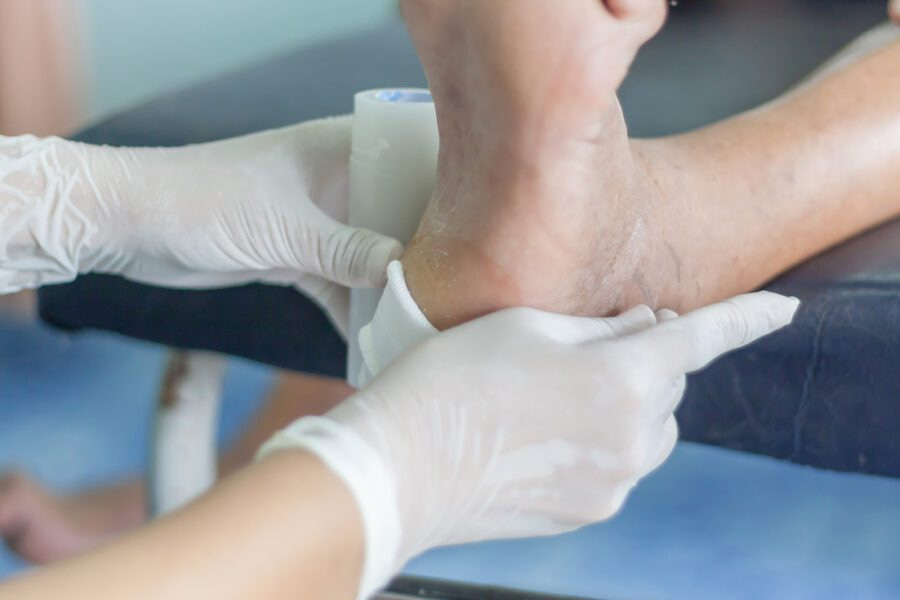Diabetic ulcers are a problem for patients with diabetes. Uncontrolled blood glucose levels can cause damage to the nerves, which can slow wound healing, and a small scrape or scratch can easily lead to the formation of ulcers.
Proper diabetic wound care can help prevent diabetic ulcers. Diabetics need the guidance of a podiatrist to ensure they foot health remains protected and issues such as wounds can be dealt with in a timely and effective manner.
Here, we give you an example of a guide to caring for a diabetic wound. This does not replace a visit to the doctor for proper diabetic foot care. If you are diabetic and have a wound or ulcer, it’s imperative that you see a podiatrist as soon as possible for proper treatment.
An Easy Guide to Diabetic Wound Care
Caring for a diabetic wound requires careful attention and proper technique to promote healing and prevent any complications.
Step 1: Gather Supplies
Collect all the necessary supplies before you begin. You will need clean gloves, mild soap, clean towels, sterile gauze or bandages, an antiseptic solution, and any prescribed wound dressings.
Step 2: Wash Your Hands
Always start by washing your hands thoroughly with soap and warm water – for a full 20 seconds to help prevent infection. Dry your hands with a clean paper towel.
Step 3: Set Up a Clean Work Area
Choose a clean and well-lit area for wound care – away from potential contaminants such as pets. Lay down a clean towel to create a sterile surface for the process.
Step 4: Gently Clean the Wound
Put on the clean, single-use gloves to prevent contaminating the wound with bacteria. Gently clean the wound using mild soap and water. Gently pat the area dry with a clean, unused towel.
Step 5: Apply an Antiseptic Solution
If your healthcare provider has prescribed an antiseptic solution, carefully apply it to the wound using sterile gauze. Follow the instructions provided by your healthcare provider.
Step 6: Apply Wound Dressing
If a specific wound dressing has been prescribed, apply it according to the instructions. Make sure the dressing covers the wound completely and is not wrapped too tightly.
Step 7: Change the Dressing Regularly
Follow your healthcare provider’s instructions for changing the wound dressing, including how often to change it. Ensure the wound area is clean and dry at all times.
Step 8: Monitor for Signs of Infection
When changing the dressing, monitor the wound for any signs of infection such as increased redness, swelling, warmth, pus, or worsening pain. Seek urgent medical attention if you notice any of the signs of an infection.
Step 9: Keep Pressure Off the Wound
Try to avoid putting unnecessary pressure on the wound area for a few days while it heals. If the wound is on your foot, be cautious when walking and useassistive devices and special footwear to prevent pressure or rubbing against the wound.
Diabetic Foot Management in Cincinnati, OH
The foot and ankle surgeons (podiatrists) at Cincinnati Foot & Ankle Care are highly experienced in diabetic wound management. We can care for your wounds and ulcers, perform treatment on known complications from a diabetic wound, and provide footwear and other tools to protect your feet.
If you’ve developed an ulcer, you need to see a doctor to reduce the risk of serious complications. But you don’t have to wait until then – we recommend coming in for a comprehensive evaluation of your foot health at least twice a year if you are diabetic.
To schedule an appointment with one of our podiatrists, call our office nearest you or use our online request form.
Share

People with diabetes often experience difficulty healing wounds.


